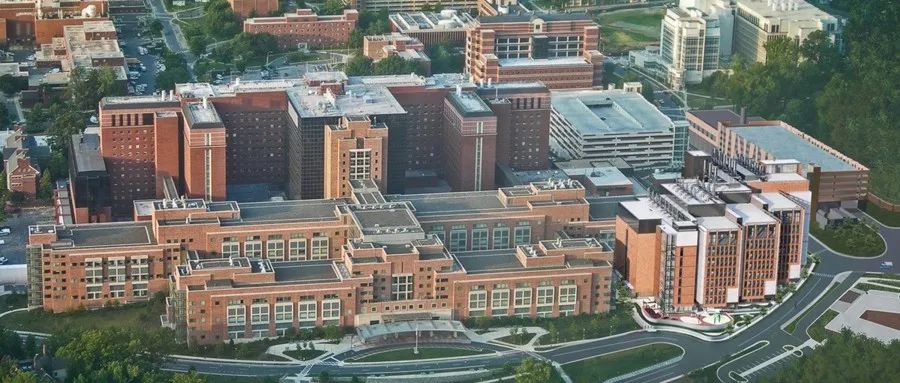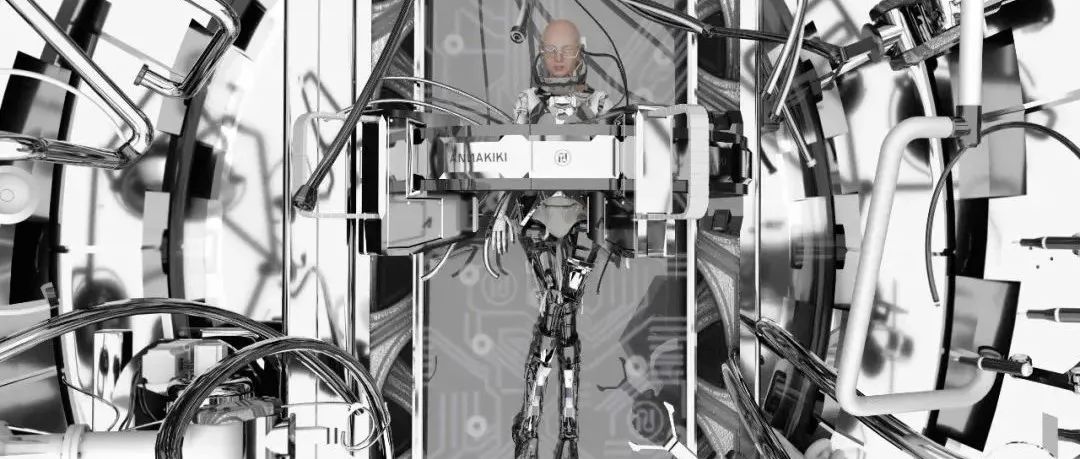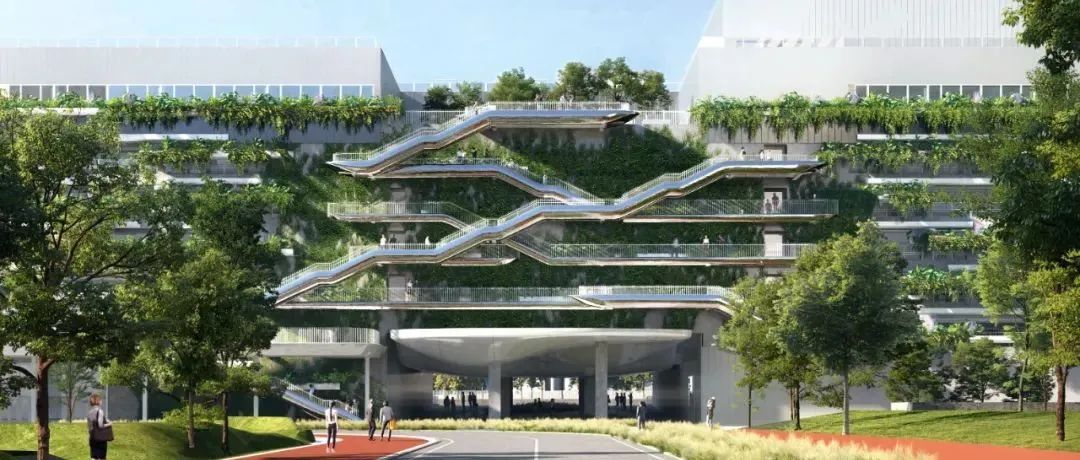地点:美国 马里兰州 贝塞斯达
面积:58,530平方米
服务:建筑设计、工程、体验设计、室内设计、景观设计、可持续发展设计
作为全球最大的生物医学机构,美国国立卫生研究院旨在研究病因、诊断、预防和治疗人类疾病,同时支持相关的科学研究。国立卫生研究院的外科、放射医疗和实验室医学(SRLM)新大楼推进了这些使命,为科学家、医生和病人提供了赋予灵感、疗愈和促进创新的场所空间。
美国国立卫生研究院委托HOK来设计外科、放射医疗和实验室医学(SRLM)新大楼时,给设计团队提出了具有挑战性的要求,除了要与现有的红砖建筑完美融合外,还要与现有的医院直接连通实现职能协同,同时不能遮挡主医院大楼。
研究院新大楼包括了外科手术间、病房、科研实验室和办公室。除了最前沿的外科和科研楼层,研究院新大楼还需要提供办公和会议空间,让不同科室以及不同专业的国立卫生研究院医生和科学家可以一起合作。
该项目还包括了对主院的临床研究楼总共7,618平方米的改造翻新工程。能容纳780个车位的新停车场包含了公用设施地下室以提供运营方面和应急供电的基础设施。
设计方案构造出由一个主楼和从主楼延伸出的三个翼楼组成的建筑。翼楼提供了足够的转角来容纳办公室和协作空间。同时,多角化的设计也让八层高的新大楼的体量分成几个部分,可以让翼楼的采光井引入的阳光照射到建筑深处。在地面层,研究院新大楼的翼楼设计提供了空间,实现了多个花园和雨水花园,从而提高了步行体验。
疗愈,韧性设计
研究表明亲自然设计,即让人与自然相连,可以改善我们的健康。研究院新大楼让身在其中的人们以多种方式与户外相连。
大幅面的玻璃窗得以让促进健康的自然光充盈,也提供了开阔的视野。
转角花园为病人、来访者和员工们提供了舒适和思考的空间。这些花园同时还是收集大楼楼顶雨水的雨水花园。
科学布局与高科技结合
国立研究院的新大楼将融合全球最先进的临床研究技术。
HOK的设计团队集结了建筑师、实验室与医疗规划师、室内设计师和工程师,共同打造了一个设计方案,以确保研究院新大楼的基础设施可以支撑最新的设备和最前沿的临床研究技术。设计团队总共设计了两个机械塔来提供必要的基础设施支持,分布在大楼的两侧。机械塔外墙上的陶土板以抛物线状排列,使重型设备可以在最小的干扰下被替换。
3D视角(上图)展示了研究院大楼的第七和第八层。采光井让日光可以照进高楼层的实验室和办公空间。每个临床研究楼层都有相应的机电系统支持最先进的技术。
灵感和可持续发展性
国立研究院新大楼把创新和可持续发展性放在了第一位。充盈的自然光线和高效的机电系统让新大楼取得LEED v4金级认证。
大楼转角处发光的玻璃块透露出创新的科研和治疗正在大楼内进行。
National Institutes of Health
Surgery, Radiology and Lab Medicine Building
Location: Bethesda, Maryland
Size: 630,000 sq. ft. / 58,530 sq. m.
Services: Architecture, Engineering, Experience Design, Interiors, Landscape Architecture, Sustainable Design
As the world’s largest biomedical agency, the National Institutes of Health (NIH) conducts and supports research on the causes, diagnosis, prevention and cure of human diseases. The NIH’s new Surgery, Radiology and Lab Medicine (SRLM) Building facilitates this mission by providing scientists, physicians and patients with spaces that inspire, heal and propel innovation.
The NIH challenged HOK to design the SLRM to blend in with the rest of the Institute’s red brick campus and connect directly with the existing hospital for synergy of functions. It could not overshadow the main hospital building.
The new building includes surgical suites, patient rooms, research labs and offices. In addition to providing floors for advanced surgeries and research, the building needed to provide workspaces and conference areas where NIH doctors and scientists could collaborate across departments and disciplines.
The project also includes an 82,000 sq.-ft. renovation of the main hospital’s clinical research wing. A new 780-vehicle parking garage has a utility vault to provide operational and emergency electrical infrastructure.
The design solution creates a building organized as three main wings extending off a main bar. The wings provide the SLRM with an abundance of corners to house offices and collaboration spaces. The multi-wing design also breaks down the massing of the eight-story building and allows lightwells between the wings to draw natural light deep into the floor plate. At ground level, the SRLM’s wings allow for a series of gardens and bioretention ponds that enhance the pedestrian experience.
Healing, Resilient Design
Research has shown that biophilic design—connecting people to nature—improves health and well-being. The SRLM connects building occupants to the outdoors in multiple ways.
Large windows provide occupants with restorative natural light and expansive views onto nature.
Corner gardens offer visitors, patients and places of comfort and reflection. The gardens double as bioretention gardens, harvesting stormwater from the building’s rooftop.
Programming, Technology and Integration
The SRLM will house the world’s most advanced clinical research technology.
HOK’s integrated team of architects, lab and medical planners, interior designers and engineers developed a design strategy to ensure the building’s infrastructure can support today’s equipment and adapt to advancements in clinical research technology. The team designed two mechanical towers on the sides of the building for needed infrastructure. The mechanical towers showcase a lively parabolic pattern with tiles that can be easily removed to swap out mechanical systems with minimal interruptions to building operations.
A 3D perspective shows the SRLM’s 7th and 8th floors. Lightwells draw natural light into upper-level labs and workplaces. Mechanical systems housed above each clinical research floor support advanced technology.
Inspiration and Sustainability
The SRLM places innovation and sustainability at the forefront. The abundant use of natural light and highly efficient mechanical systems have helped position the building to earn LEED v4 Gold certification.
Glowing glass cubes along the corners of the building hint at the innovative research and treatment occurring inside.
本文来自微信公众号“HOK贺克”(ID:hok_ap)。大作社经授权转载,该文观点仅代表作者本人,大作社平台仅提供信息存储空间服务。












